Let’s start with the basics. 54 inches equals 4.5 feet, or approximately 137.16 centimeters. If you’re picturing this size but can’t quite visualize it, don’t worry, you’re not alone.
That’s where real-world analogies come in. Measurements on paper often feel meaningless until you connect them to familiar objects. In this blog, we’ll walk you through 15 real-world analogies that perfectly match the height or length of 54 inches. Each example is carefully chosen, clearly explained, and supported with a visual.
Why Analogies Help
We remember better when we relate abstract numbers to physical things. A measurement like 54 inches becomes more useful when you can link it to a desk, a window, or even a doorway.
That’s the mission of ScaleAnalogy: to make measurements make sense.
Convert 54 Inches to Common Measurements
- Feet: 54 inches = 4.5 feet
- Centimeters: 54 inches = 137.16 cm
- Millimeters: 1371.6 mm
- Meters: 1.3716 m
- Feet and Inches: 4 feet 6 inches
- Decimal Feet: 4.5 ft exactly
Inches to Feet Converter
Feet: 0 ft
15 Real-World Analogies That Are 54 Inches in Height or Length
Each analogy below is structured in 3 short paragraphs to help you clearly understand what 54 inches looks like and why it matters.
1. Standard Full-Length Mirror
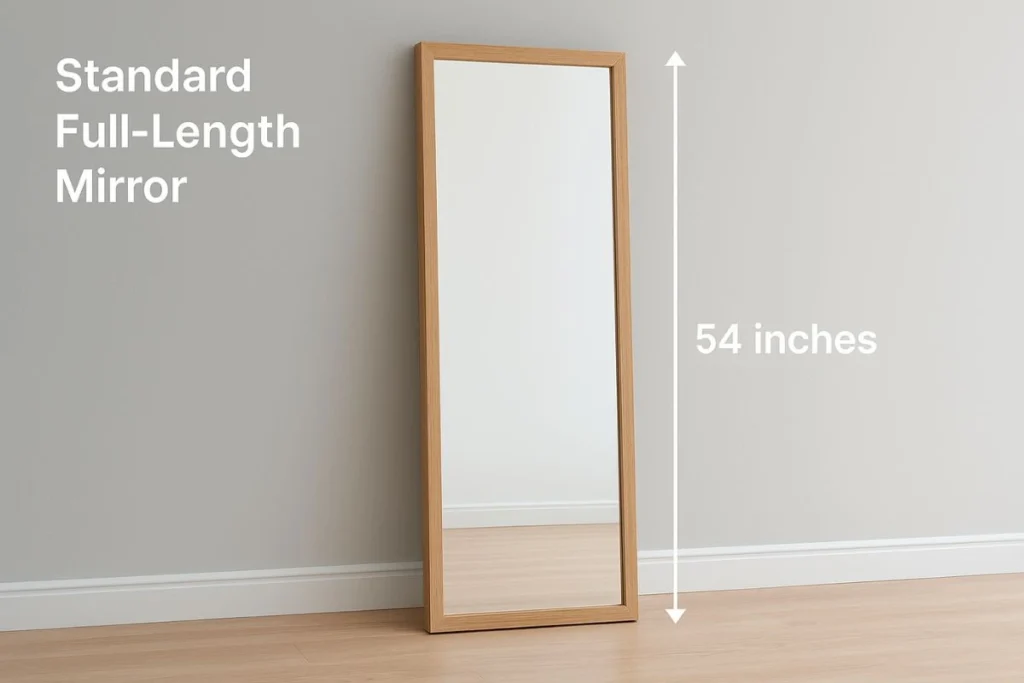
Many full-length mirrors stand about 54 inches tall, especially in apartments and dressing rooms. This makes them tall enough to reflect the body from head to toe for most users.
The height ensures full-body visibility without needing a bulky frame. It offers utility without taking up excessive wall space.
Interior designers often use 54-inch mirrors in narrow hallways or closet doors for space-saving reflection and to increase room depth visually.
2. Laundry Basket Stack (Three Medium Baskets)
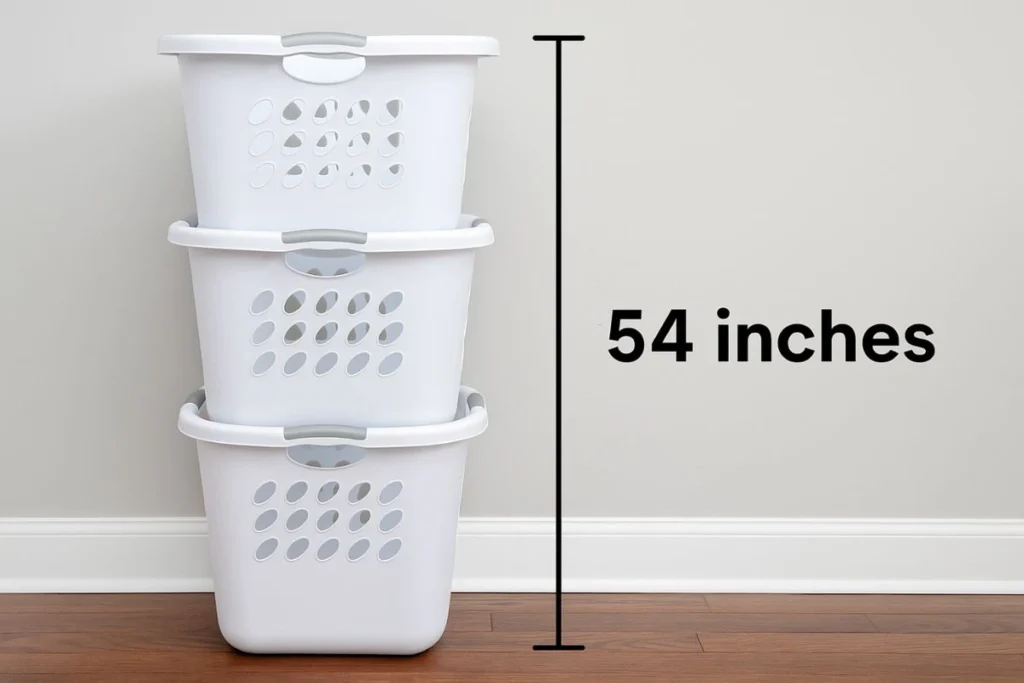
Stacking three medium-sized laundry baskets typically gets you close to 54 inches in height. Most medium baskets are around 18 inches tall, so the total comes to approximately 54 inches.
This stack height is useful for visualizing compact vertical space, such as organizing items in a laundry cabinet or closet corner.
Professional home organizers use similar stacks when designing efficient layouts for laundry rooms with tight storage needs.
3. Twin XL Bed Width
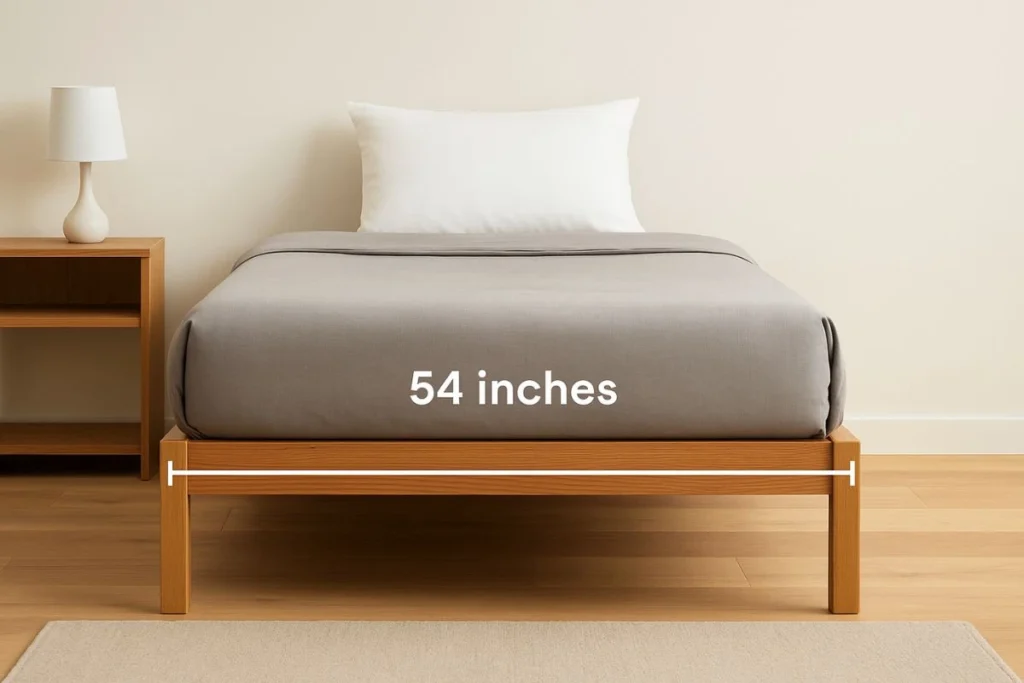
A Twin XL bed is about 54 inches wide, which is more than a standard Twin. This width gives extra room for movement.
The 54-inch span allows for comfort, especially in dorm rooms or guest bedrooms where space is limited.
Mattress designers use this size to balance compact dimensions with sleeping comfort in modern living environments.
4. Dining Bench
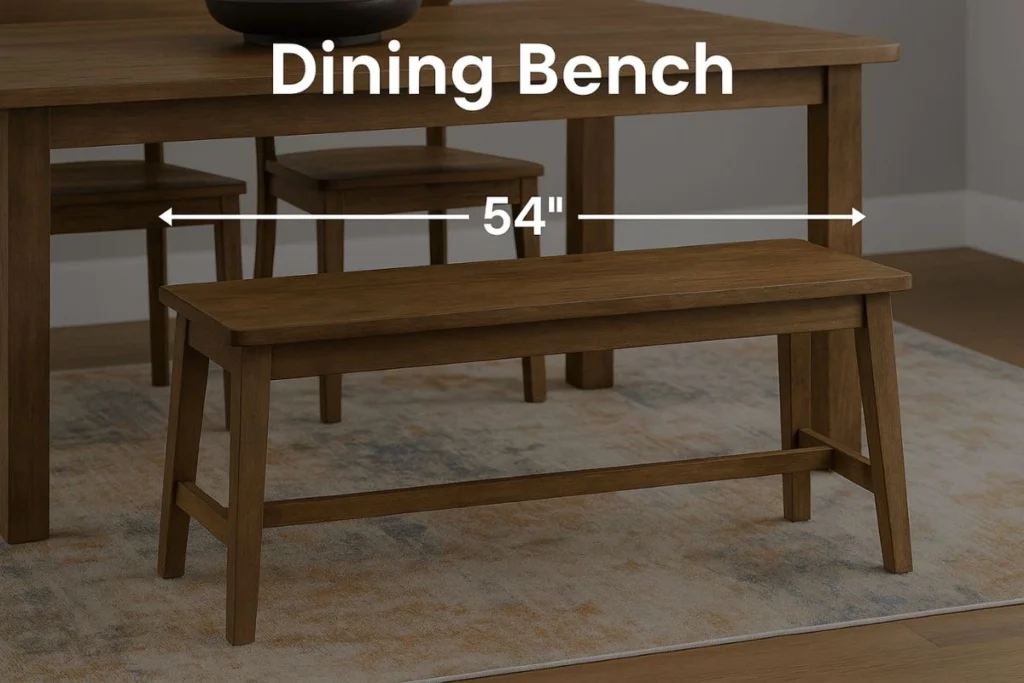
Some family-style dining benches measure exactly 54 inches long, though sizes may range between 48 and 60 inches depending on design and brand.
A 54-inch bench allows seating for two adults or three children, making it ideal for rectangular dining tables.
Interior planners prefer this length when they need flexible seating options that don’t overcrowd compact dining spaces.
5. Pool Depth for Kids’ Pools
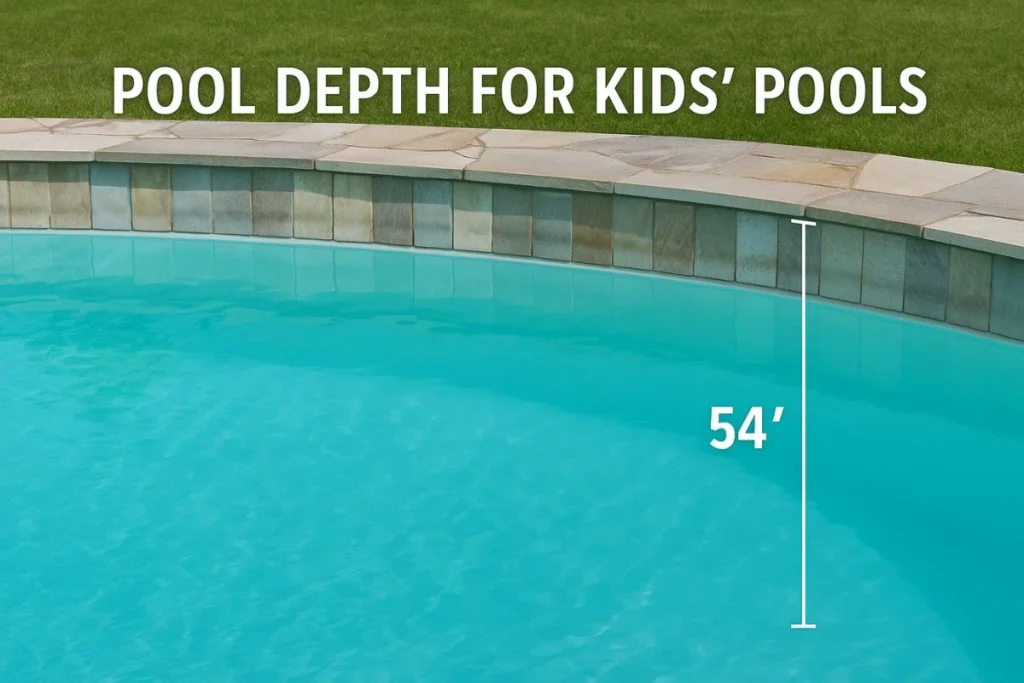
A 54-inch deep pool is often the maximum safe depth for kids’ pools and shallower ends of larger pools.
This depth allows standing play for older children while still being shallow enough to be considered safe.
Pool designers and safety regulators use this standard for creating child-friendly recreation zones.
6. Standard Clothing Rack
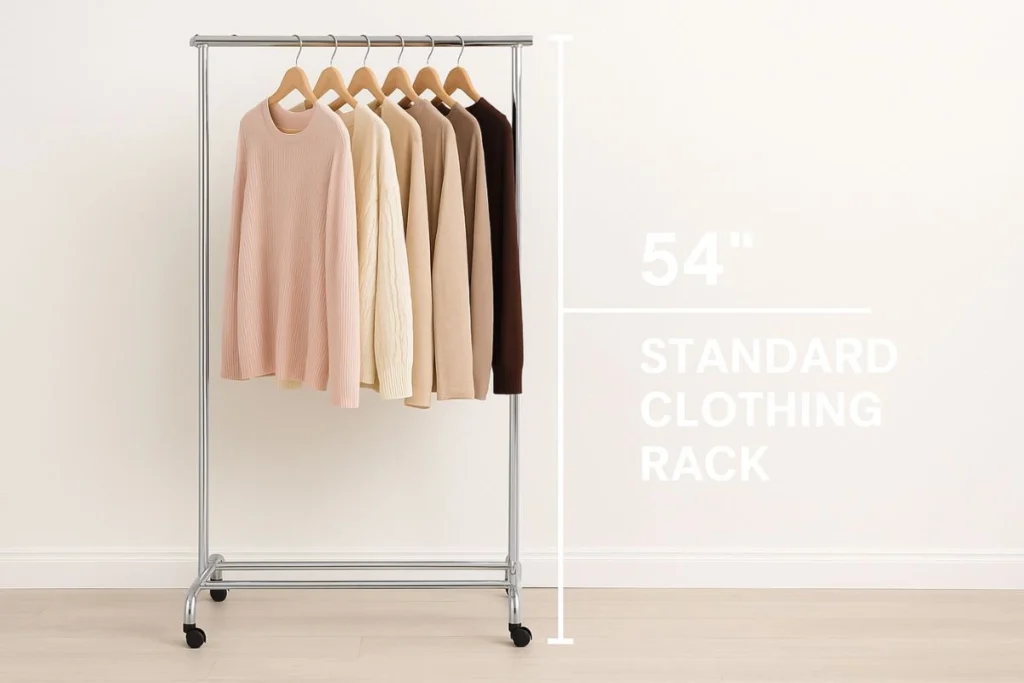
Freestanding clothing racks in stores often measure 54 inches from the floor to the bar where hangers go.
That height makes it easy for shoppers to reach clothes while allowing long garments like dresses to hang freely.
Retail space planners and visual merchandisers rely on this measurement for creating accessible yet organized displays.
7. Height of a Six-Year-Old Child
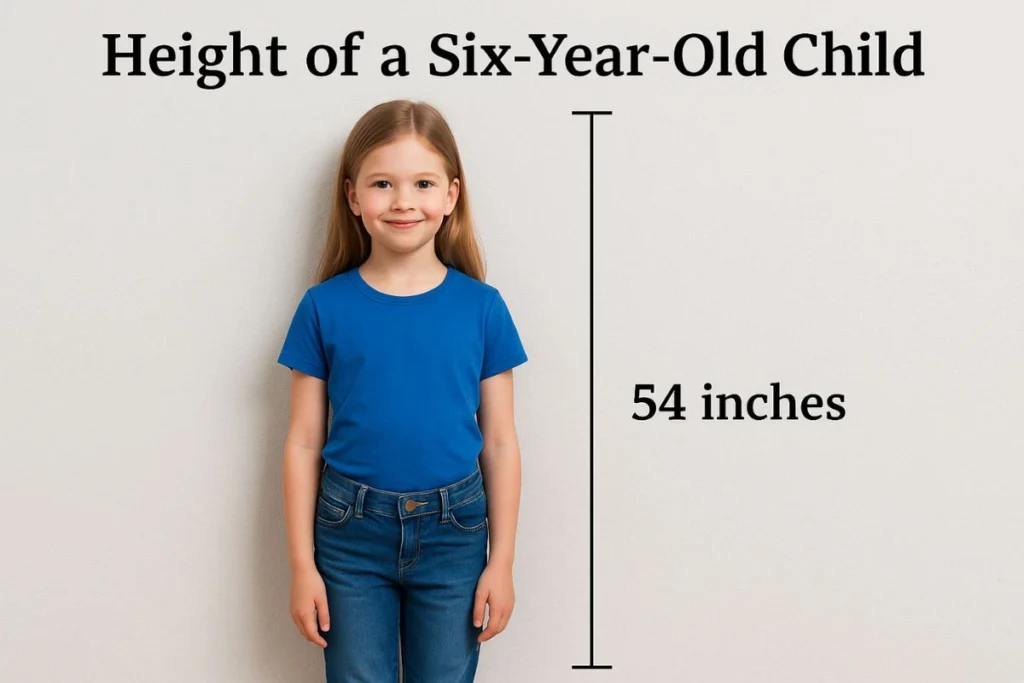
While the average five-year-old stands around 42 to 45 inches, some taller-than-average children reach about 54 inches.
That makes 54 inches closer to the height of a tall six- or seven-year-old, which is often used as a reference in ride safety charts.
Theme park designers and pediatric equipment makers use this number for upper-age limits in child-specific spaces.
8. Kitchen Pantry Shelf Height
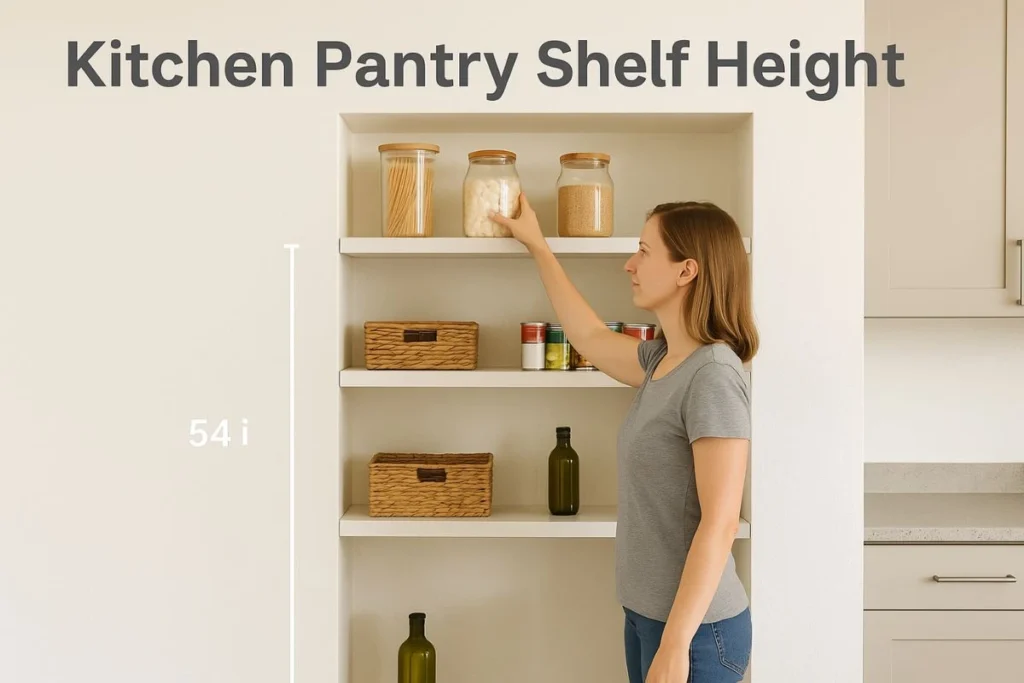
Upper pantry shelves in many kitchens are set around 54 inches high for accessibility.
This ensures reachability for adults without needing a step stool for everyday use.
Kitchen designers use this number when planning ergonomic storage spaces that cater to most users.
9. Rolling Utility Cart (3-Tier)
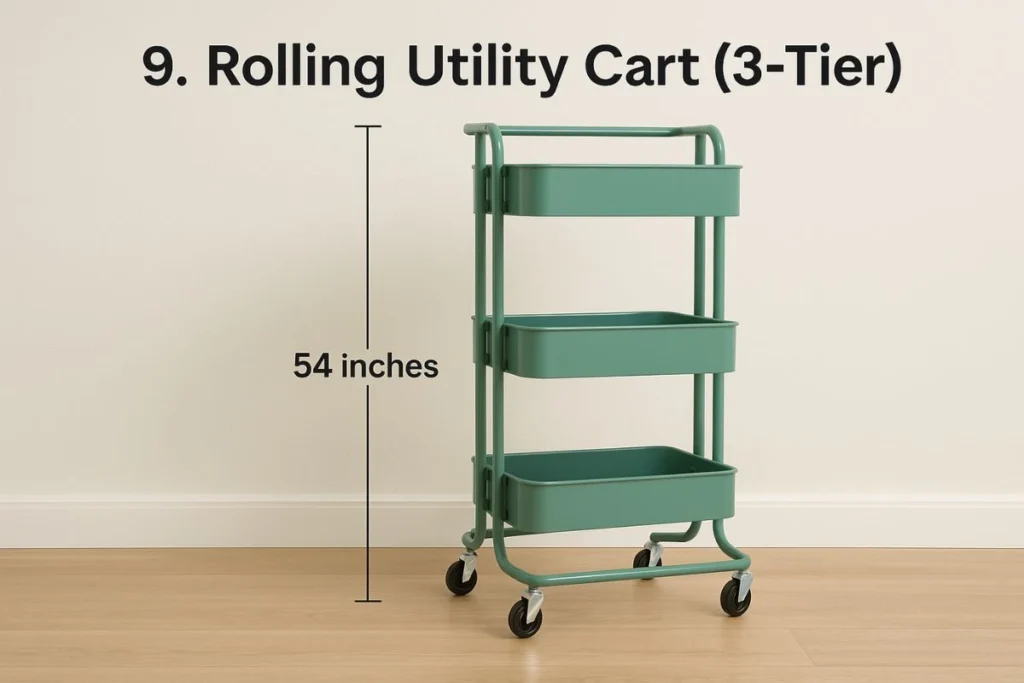
Not all 3-tier utility carts are 54 inches tall. Many are shorter but some larger models with taller legs and deeper trays do reach that exact height.
A 54-inch cart provides vertical storage for crafts, cleaning tools, or office supplies while staying mobile and easy to handle.
Engineers and product designers use this size for users who want compact storage with a taller reach for accessibility or visibility.
10. Flat-Screen TV (Diagonal Size)
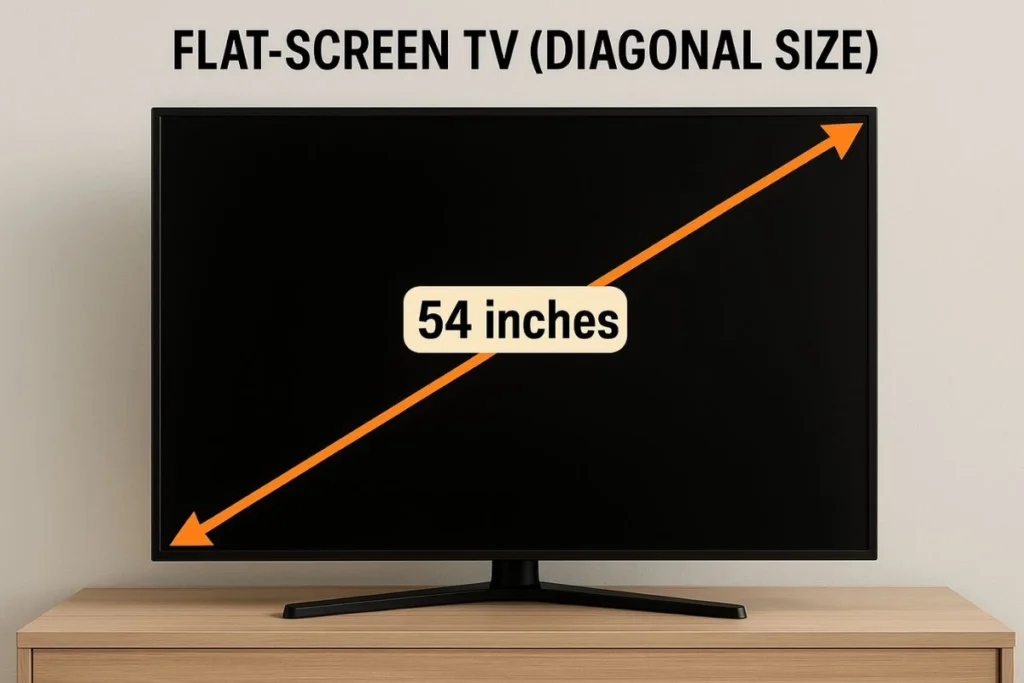
A 54-inch diagonal screen size is common for medium-sized flat-screen TVs used in bedrooms or offices.
This dimension translates to roughly 47 inches in width and 27 inches in height, making it a nice mid-size.
TV mount manufacturers and furniture companies design media units with this popular dimension in mind.
11. Standard Dog Crate Length (Large Breeds)
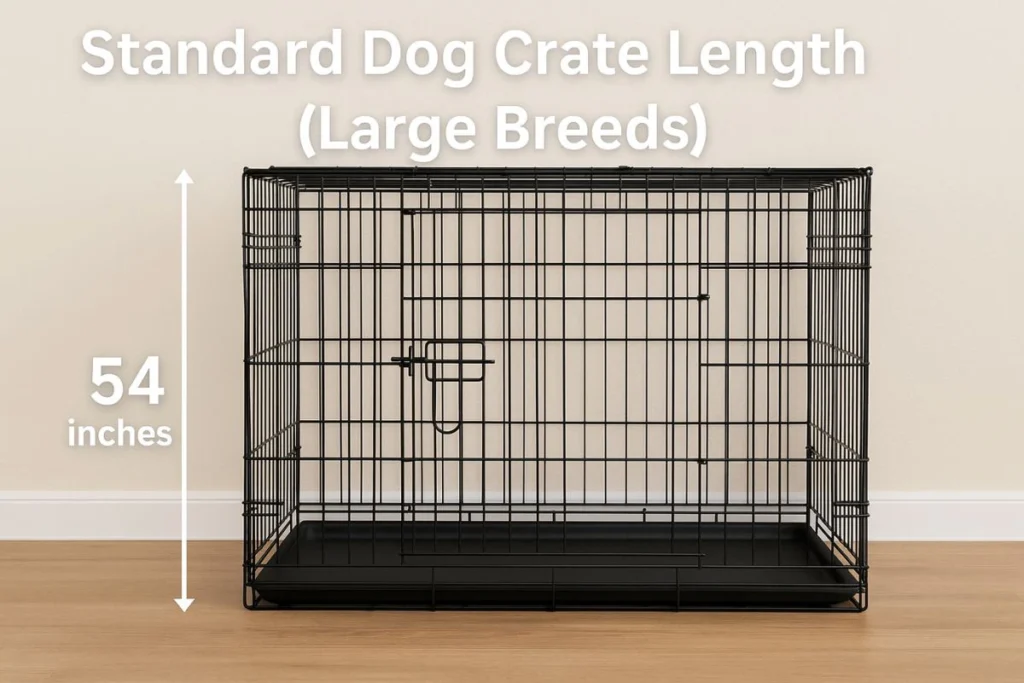
Many dog crates made for large breeds measure about 54 inches in length. These crates comfortably house dogs like Labradors, Golden Retrievers, or German Shepherds.
This length gives pets room to stretch and move while still being manageable indoors. It’s ideal for long-term comfort and crate training without cramping the animal.
Pet product designers use the 54-inch length to balance interior space with portability. It also fits across the backseat of many cars for travel with larger dogs.
12. Filing Cabinet Height (4 Drawers)
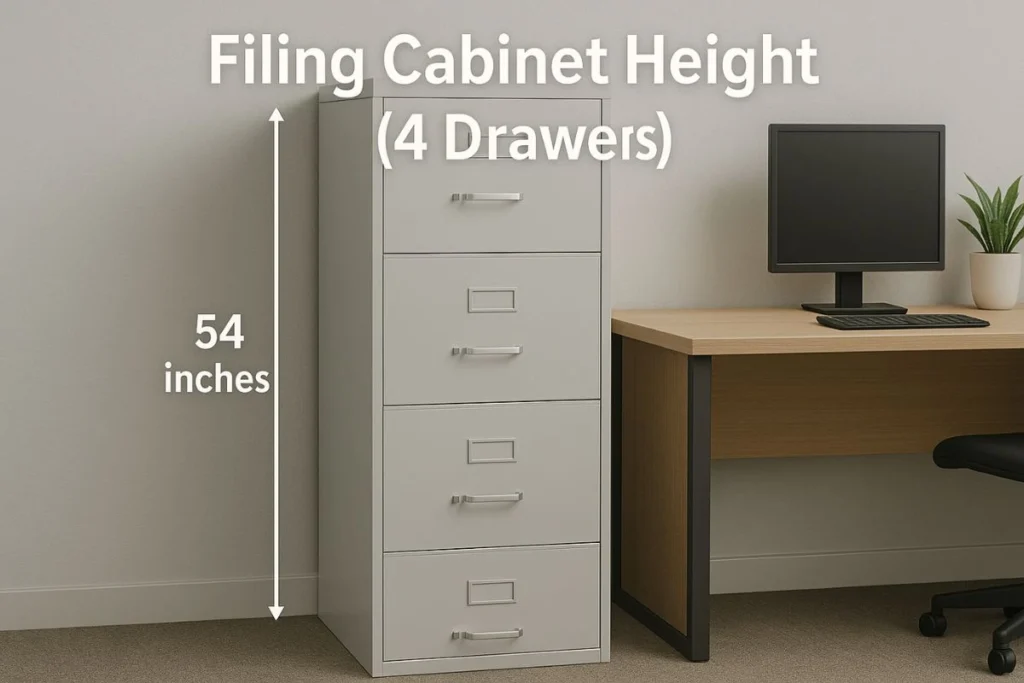
A 4-drawer vertical filing cabinet stands about 54 inches tall, commonly found in office settings.
This height allows standing access and maximum paper storage in a small footprint.
Office designers favor this size for balancing capacity and comfort when standing and sorting.
13. Bar Counter Height
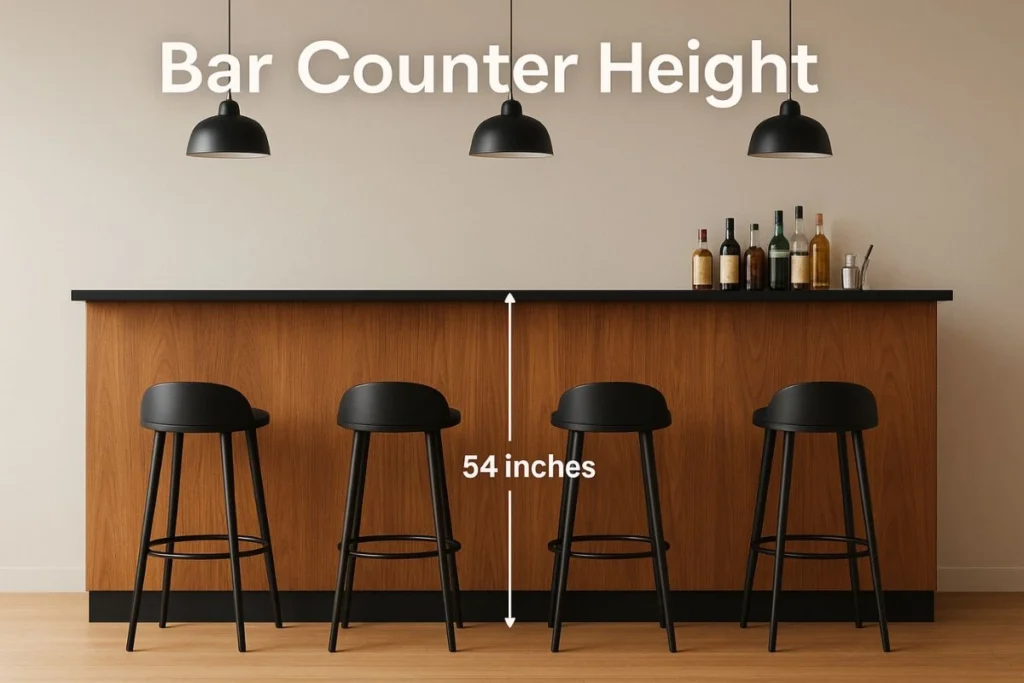
The countertop on most bars is around 42 inches tall, but in custom setups, the back panel or rear structure often measures exactly 54 inches in height.
This vertical span is used to hide plumbing, provide visual privacy, or support shelving without taking attention from the front-facing space.
Bar designers and contractors use the 54-inch rear panel size to balance utility with clean aesthetics.
14. Wooden Room Divider Panel
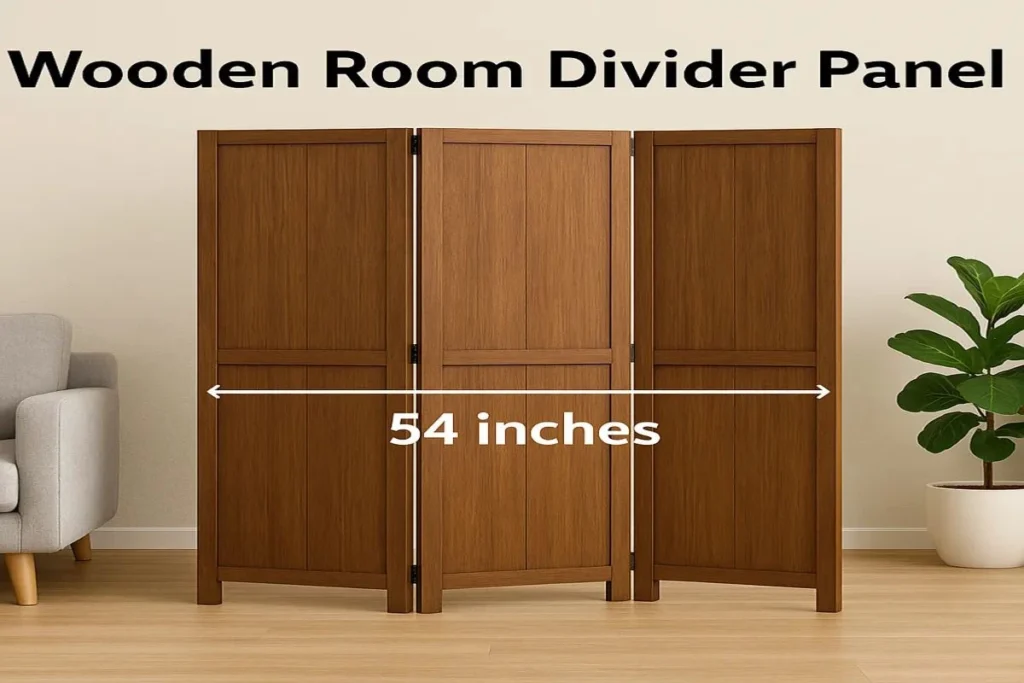
Some folding room divider panels are 54 inches tall, especially tabletop or low-profile models.
They provide separation without closing off the room visually.
Interior decorators use this height to create subtle divisions in shared spaces or open studios.
15. Upright Toy Storage Unit
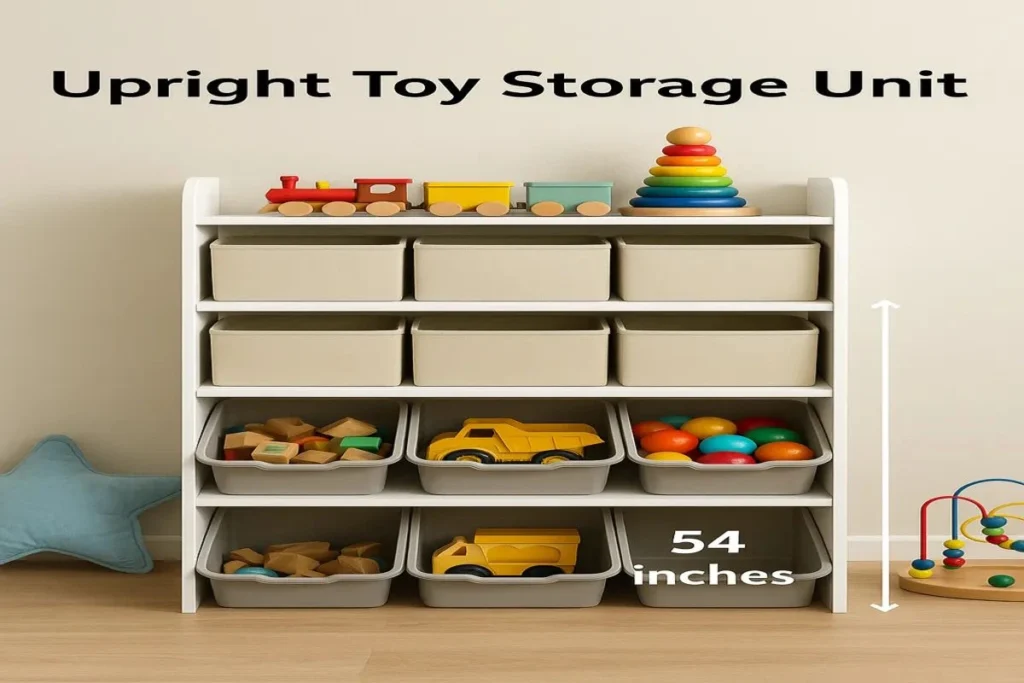
Many vertical toy storage units for playrooms measure around 54 inches in height.
They’re tall enough to hold multiple bins while keeping the top shelf within a child’s reach.
Furniture makers use this measurement to create organized and child-friendly storage solutions.
What Is 54 Inches in Different Contexts?
- How tall is 54 inches in feet? 4 feet 6 inches tall
- How much is 54 inches in feet and cm? 4.5 ft and 137.16 cm
- How big is 54 inches in feet? Roughly the width of a Twin XL mattress or height of a filing cabinet
- What height is 54 inches? Often seen in home design, kids’ furniture, and utility items
- 54.5 inches in feet? 4.54 ft or 4 feet 6.5 inches
FAQs: People Also Ask
What is 54 inches in feet and inches?
54 inches equals 4 feet 6 inches.
How many feet is 54 inches?
54 inches is 4.5 feet.
What is 54 inches in centimeters?
54 inches is 137.16 centimeters.
How tall is 54.5 inches in feet?
54.5 inches = 4 feet 6.5 inches or 4.54 feet.
Is 54 inches tall for a child?
It’s above average for a 5-year-old and average for a 6-7-year-old.
What does 54 inches look like?
About the height of a filing cabinet, laundry stack, or room divider panel.
Final Thoughts
Visualizing 54 inches becomes easier when you tie it to real things. Whether it’s a pantry shelf, a TV, or a toy unit, these analogies help bring the number to life.
That’s exactly what ScaleAnalogy does: making measurements meaningful through real-world context.
Explore more guides, analogies, and visual references on our site to become better at estimating and understanding everyday dimensions.


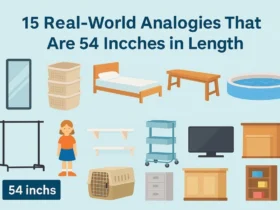
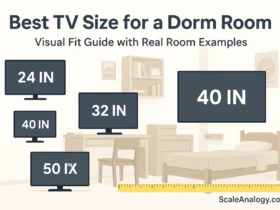
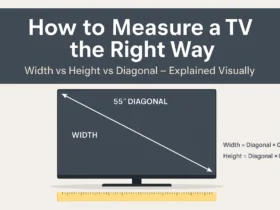



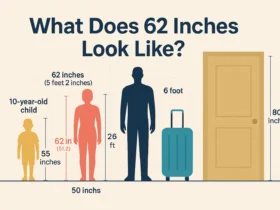
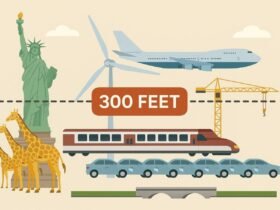
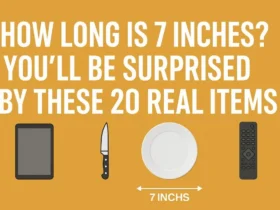

Leave a Reply